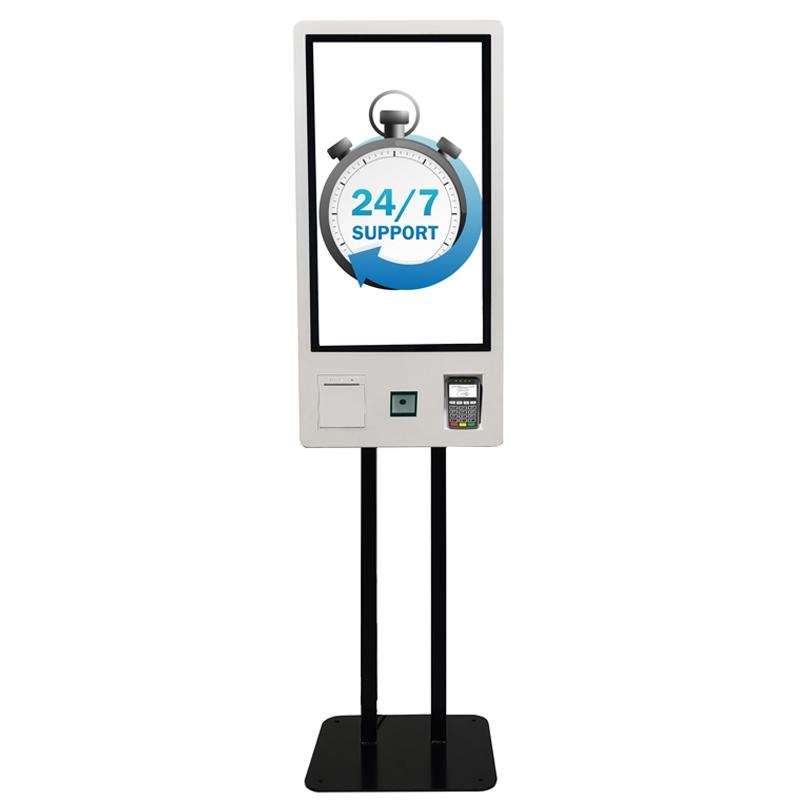Introducing the Free Standing Self Order Kiosk
In an era where convenience and efficiency are paramount, the Free Standing Self Order Kiosk is revolutionizing the way customers interact with businesses. Ideal for restaurants, cafes, retail stores, and various service industries, this innovative kiosk enhances the customer experience by allowing users to place orders and make payments independently.
Key Features
The Free Standing Self Order Kiosk is designed with cutting-edge technology to ensure a smooth and intuitive user experience. Equipped with a high-definition touchscreen, the kiosk supports multi-touch functionality, enabling customers to navigate menus and options easily. Its robust software allows for customizable interfaces, ensuring that businesses can tailor the kiosk to reflect their branding and specific offerings.
Additionally, the kiosk includes integrated payment options, supporting credit cards, debit cards, and mobile payments. This feature not only streamlines the transaction process but also enhances security, providing customers with peace of mind.
Benefits for Businesses
Improved Customer Satisfaction: By enabling customers to place orders at their own pace, the kiosk reduces wait times and enhances the overall dining or shopping experience. This self-service model encourages repeat visits and positive reviews.
Operational Efficiency: The Free Standing Self Order Kiosk minimizes the need for staff to take orders, allowing employees to focus on food preparation and customer service. This efficiency can lead to cost savings and increased productivity.
Space-Efficient Design: The freestanding design allows for flexible placement in various environments. Whether in a bustling restaurant or a retail space, the kiosk can be positioned for maximum visibility and accessibility.
Data Collection and Insights: The kiosk can gather valuable data on customer preferences, order patterns, and peak times. This information helps businesses make informed decisions about menu offerings, staffing, and marketing strategies.
Applications
The Free Standing Self Order Kiosk is versatile and can be utilized in multiple settings:
Restaurants and Cafes: Customers can browse the menu, customize their orders, and pay seamlessly, reducing the burden on staff during peak hours.
Retail Stores: Shoppers can quickly find products, check prices, and place orders without waiting for assistance, enhancing the shopping experience.
Fast Food Chains: The kiosk allows for quick and efficient order placement, reducing lines and improving service speed.
Entertainment Venues: Visitors can purchase tickets, snacks, and merchandise quickly, enhancing their overall experience.
Conclusion
The Free Standing Self Order Kiosk is a game-changer for businesses looking to improve customer engagement and streamline operations. With its user-friendly design and customizable features, it caters to the diverse needs of various industries. By implementing this innovative solution, businesses can enhance service efficiency, boost customer satisfaction, and ultimately drive sales.
For more information on how the Free Standing Self Order Kiosk can transform your business, contact us today!



